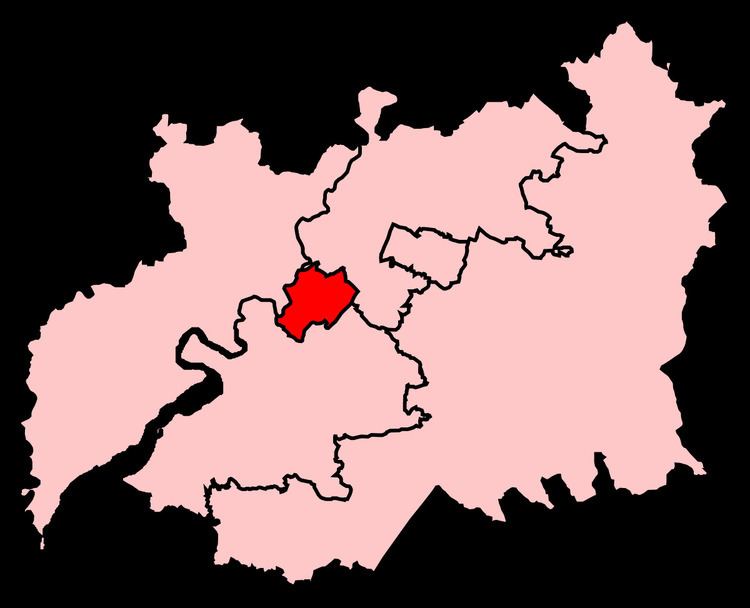Created 1885 Number of members Two | Electorate 80,788 (December 2010) Number of members One Type of constituency Borough constituency | |
 | ||
Gloucester /ˈɡlɒstər/ is a constituency centred on the cathedral city and county town of the same name, represented in the House of Commons of the UK Parliament by Richard Graham of the Conservative Party.
Contents
History
A borough of Gloucester was established by 1295 that returned two burgesses as Members of Parliament to the House of Commons. Its population meant this was a situation not leading to an outright rotten borough identified for abolition under the Reform Act 1832 however on more fair (far more equal representation) national changes in 1885, representation was reduced to one member under the Redistribution of Seats Act 1885.
Profile
Since 1979 Gloucester has been a bellwether constituency by passing between representatives of the two largest parties in the same way as the government. After nearly three decades as a Conservative seat, it was held by Labour from 1997 to 2010 before returning to a Conservative on a swing of 8.9%.
Boundaries
1918-1950: The County Borough of Gloucester.
1950-1955: The County Borough of Gloucester, and in the Rural District of Gloucester the civil parishes of Barnwood, Brockworth, Hempsted, Hucclecote, and Wotton Vill.
1955-1974: The County Borough of Gloucester, and in the Rural District of Gloucester the civil parishes of Barnwood, Brockworth, Hempsted, and Hucclecote.
1974-1983: The County Borough of Gloucester.
1983-1997: The City of Gloucester, and the District of Stroud wards of Quedgeley and Hardwicke, and Upton St Leonards.
1997-2010: The City of Gloucester.
2010–present: The City of Gloucester wards of Abbey, Barnwood, Barton and Tredworth, Elmbridge, Grange, Hucclecote, Kingsholm and Wotton, Matson and Robinswood, Moreland, Podsmead, Quedgeley Fieldcourt, Quedgeley Severn Vale, Tuffley, and Westgate.
MPs 1640-1885
In 1881, Robinson's willingness to stand down faced with a popular petition and the unwillingness of the Conservatives to make allegations nor investigate matters further led to suspicions of collusion between the parties and a Royal Commission was set up to examine electoral practices. The Royal Commission concluded that Gloucester was among the most corrupt of the seven towns investigated and that bribery was endemic in all elections in the city. The Commission concluded that half of the electorate had taken bribes in 1880 and blamed local politicians for most of the corruption. Despite these findings and virtually halving the electorate eligible to vote Robinson was reelected for Gloucester in 1885 when representation had been reduced to one member under the Redistribution of Seats Act 1885.
